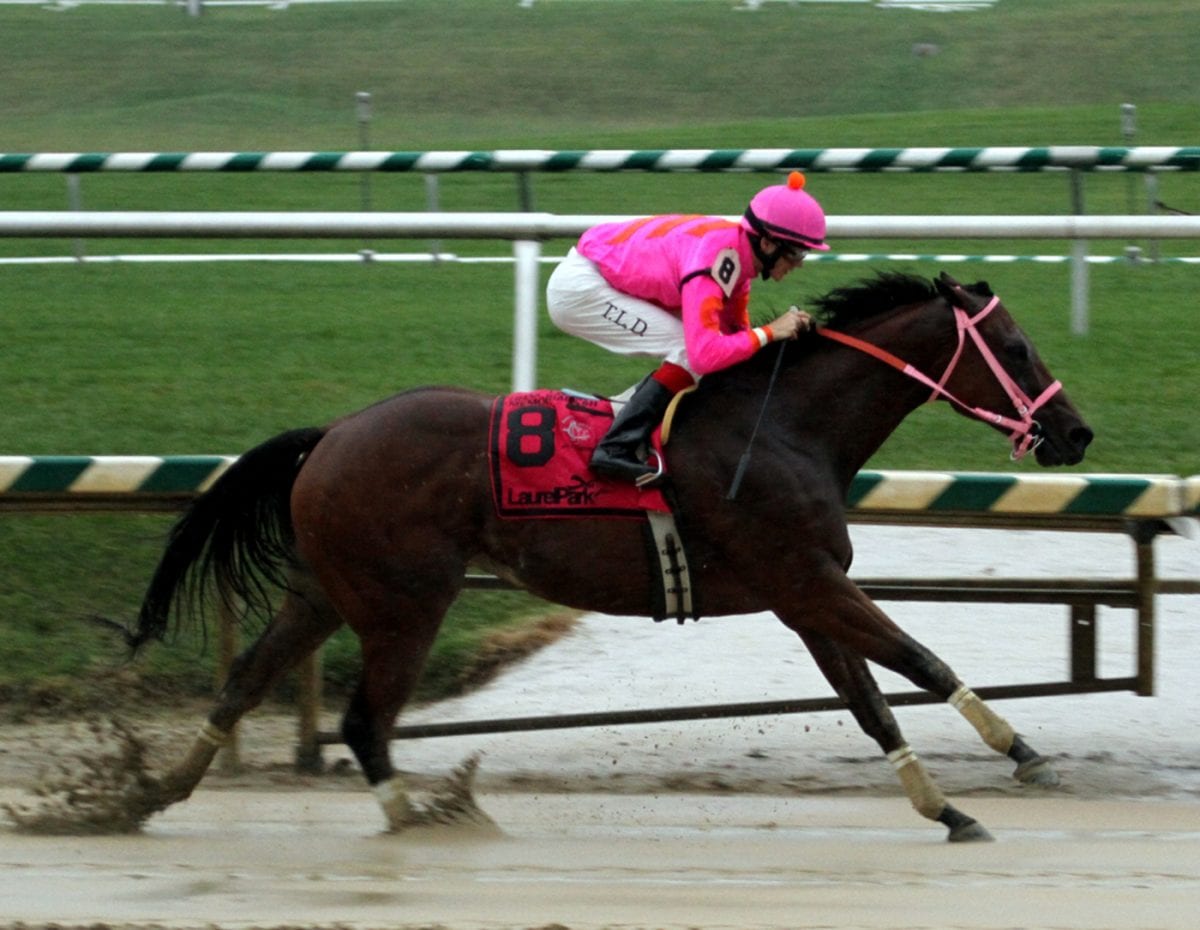De Francis Day: Best Laurel card in years?

Immortal Eyes, 2013 De Francis Dash winner. Photo by Laurie Asseo.
by Frank Vespe
Saturday’s Laurel Park card – anchored by the Grade 3 Frank J. De Francis Memorial Dash – might just be the best Laurel card in recent memory.
Also, with 11 races, among the longest.
How good?
A quick side-by-side comparison of the overlapping stakes on this year’s De Francis card and last year’s makes clear the difference.
[su_divider top=”no” style=”double” divider_color=”#0b0c0c” size=”1″] [table id=140 /]The six stakes carded in 2015 attracted a total of 55 entries, of whom 48 actually competed. That’s an average of 9.2 horses per race entered, with 8.0 actually starting.
This year, those same six races have drawn 71 entries. That’s an average of 11.8 horses per race and an increase of over 29 percent in entries. If a similar percentage of entries scratch on Saturday, the stakes will still average more than 10 horses per.
Three of the six stakes have full fields of 14 entered, and another has 11. The other two – the De Francis itself and the Smart Halo, for two-year-old fillies – both have nine.
And the quality is solid:
- The $100,000 Richard W. Small Stakes is headlined by multiple graded winner Tommy Macho, 2013 Kentucky Derby runner-up Golden Soul, and two-time Maryland Million Classic winner Admirals War Chest;
- Graded-placed fillies Malibu Stacy and Takrees are among the main contenders in the $100,000 Safely Kept for sophomore fillies;
- The field in the $100,000 City of Laurel for three-year-olds is tough enough that Grade 3 winner Rated R Superstar is 10-1 on the morning line, with another G3 winner, Sharp Azteca, who won the Pat Day Mile at Churchill Downs, the lukewarm 3-1 favorite; and
- The De Francis includes five runners that are graded winners or graded-placed.
Of all the many changes a racetrack can make to grow interest in its product – improved marketing, simulcasting in high-definition, improvements to the facility – the most important is also the toughest to accomplish: improving the product itself.
This card certainly achieves that goal.








That noise you just heard were the collective jaws dropping of every horse racing fan who just now have finally discovered that the Maryland racing circuit is second-to-none in quality and quantity of its fields. Bravo to the entire Stronach Team for making Maryland Racing great again!